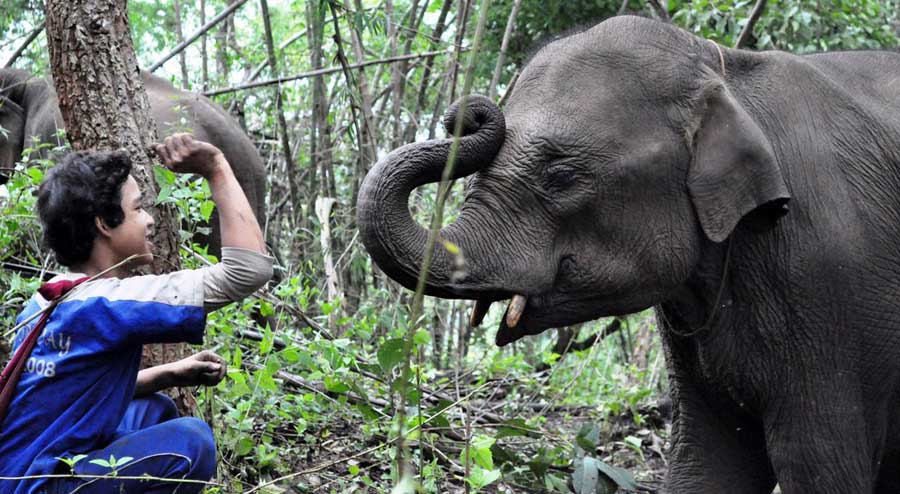A research team opens up about its quest to understand a herd of rescued elephants.

The collection of scientific data is a vital part of the work we do at GVI Chiang Mai, and we are constantly seeking ways to improve and develop our projects.
That includes our project, Alternative Livelihoods and Elephant Rescue in Thailand, on GlobalGiving.
Living in natural, social herds in the forest has a tremendous impact on an elephant’s psychological health. It provides elephants with a balanced diet and dramatically increases their life expectancy. No longer forced to work in captivity, they live longer and happier lives.
In July, our team decided to make some changes to the research projects to ensure we are always searching for ways to develop and improve them. We created a set of data known around the hub as Movement Data.
This data set was designed to give both volunteers and staff a broader understanding of the social interactions and behaviors of our rescued elephant herds.
Prior to this, we had been collecting very specific data on the touches between elephants and their vocalizations. Since we had a year’s worth of data on these aspects that was ready for analysis, we decided to look for new avenues to pursue.
In came the Movement Data. We gave volunteers a list of 10 behaviors we wanted them to record. Some of the observations we wanted them to focus on included:
These lists were produced based upon both the current literature on elephant behavior and the extensive experience of staff and interns with our elephants. We gave space for the data collectors to include any other interactions they thought noteworthy.
After two months of data collection our intern, Danielle, analyzed the data. While at this point the data was still fairly limited, some key trends were already starting to appear. The main trend was that of the presence of allomothering. Allomothering is when an adult that is not the mother performs the duties of a mother, thus assisting with the care of young.
Having gotten these early results, we decided to once again revamp our data collection to focus more on these aspects. The target behaviors now include which elephant baby Wan Mai seeks comfort in and who the young elephant is imitating and learning from.
After discussions with a leading external researcher based at Bangkok University, we are also trying to assess the use of smell in the elephants decision on which direction to move through the forest. This data set is designed to be fluid and so far has been very successful at allowing us to see behavioral trends we might have otherwise missed.
We hope that in the future we can use these insights to create more specific studies that will be able to add to the global scientific knowledge on Asian Elephants. Thank you for your continued support of us and our elephants!
This post was originally published as a project report for GlobalGiving donors.
Featured Photo: Three Elephants Living Happily In The Forest by Action Change (Formerly GVI Trust)Find exactly what you're looking for in our Learn Library by searching for specific words or phrases related to the content you need.